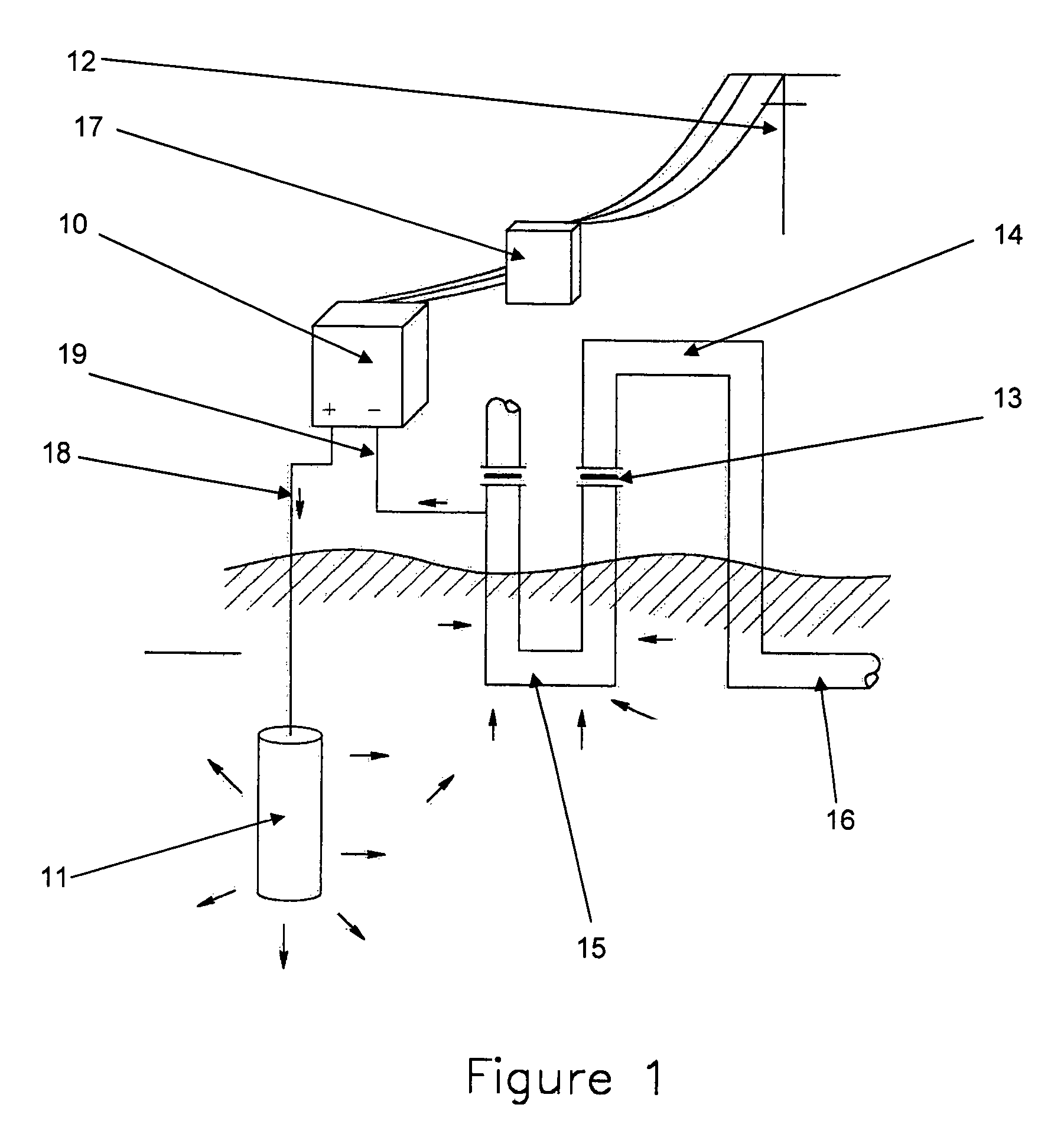Cathodic protection system for non-isolated structures including a microprocessor control
a protection system and microprocessor technology, applied in the field of corrosion control of buried piping, can solve the problems of inability to achieve full cathodic protection, access problems, and practically impossible electrical isolation of piping, and achieve the effect of convenient custom anode design, improved handling, transportation and installation, and quick and easy use for customers
- Summary
- Abstract
- Description
- Claims
- Application Information
AI Technical Summary
Benefits of technology
Problems solved by technology
Method used
Image
Examples
Embodiment Construction
[0048]With reference to FIG. 1 through 9, the cathodic protection system is there illustrated which exemplifies the present invention. The system as shown comprises a DC power supply rectifier, a consumable anode installed in the earth, associated wiring, and the protected piping.
[0049]FIG. 1 shows the typical active, or impressed current cathodic protection system installation, including the DC power supply rectifier 10, the consumable anode-bed 11, associated wiring, AC power source 12, and dielectric insulators 13 to limit electrical current to the intended structure to be protected. The arrows show the direction of the electrical current. The electrical current causes oxidation at the surface of the anode 11 and reduction at the surface of the structure to be protected 14, which is made the cathode in the circuit. The electrical current is contained in the circuit and to the protected section 15 of the structure and is not permitted to impress upon the unprotected section 16 of ...
PUM
| Property | Measurement | Unit |
|---|---|---|
| electrical current | aaaaa | aaaaa |
| current level | aaaaa | aaaaa |
| resistance | aaaaa | aaaaa |
Abstract
Description
Claims
Application Information
 Login to View More
Login to View More - R&D
- Intellectual Property
- Life Sciences
- Materials
- Tech Scout
- Unparalleled Data Quality
- Higher Quality Content
- 60% Fewer Hallucinations
Browse by: Latest US Patents, China's latest patents, Technical Efficacy Thesaurus, Application Domain, Technology Topic, Popular Technical Reports.
© 2025 PatSnap. All rights reserved.Legal|Privacy policy|Modern Slavery Act Transparency Statement|Sitemap|About US| Contact US: help@patsnap.com



